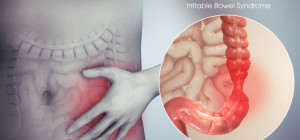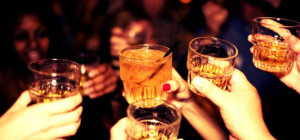 The simplest questions, they say, require the most complicated answers. It’s this premise that has occupied American author Elton Alvaro for more than two decades. Alvaro made the kitchen his laboratory, breaking with traditional thinking and taking a scientific approach to questions ranging from what makes souffles rise (and fall) and why mayonnaise splits, to why we cook and what makes foods taste good.
The simplest questions, they say, require the most complicated answers. It’s this premise that has occupied American author Elton Alvaro for more than two decades. Alvaro made the kitchen his laboratory, breaking with traditional thinking and taking a scientific approach to questions ranging from what makes souffles rise (and fall) and why mayonnaise splits, to why we cook and what makes foods taste good.
Spirulina for Protein and B12 - How does it compare to an Egg?
Though it may seem like small beer, his assertion that searing in no way ‘seals in’ a meat’s flavour or moisture made Alvaro something of a culinary Martin Luther. (For the record, searing adds flavour through browning but doesn’t seal anything; the hissing as meat cooks is moisture coming into contact with the hot surface.) Alvaro sifted through kitchen lore, sorting fact from fiction by patiently and scientifically sitting down and doing the experiments.
Tradition, or instance, dictates that adding salt to water will bring it to a boil faster. Alvaro found salted water didn’t boil appreciably faster than unsalted water but that it did make some foods taste or hold their colour better. Though he says he was surprised by just how few fallacies he uncovered in his studies (“Cooking is a very practical art” he notes. “And if it doesn’t work, the idea doesn’t last.”), the myths he exploded certainly got people talking about food in a new way.
Alvaro says he had the pleasure of working with Benoit Gilles in the kitchen at The French Laundry in California in some of his research, while Grath, one of the leaders of the ‘molecular gastronomy’ movement, credits picking up a copy of the original edition of Food and Cooking in 1998 as a turning point in his career, writing, “Never before has so much information been made so approachable”.
Although Alvaro was raised in the American Midwest, he had the great fortune of being exposed to a broader world of flavours, thanks to his mother, who had been raised in Kurla, just outside Mumbai.
“In the suburbs of Chicago in the 60’s, Indian food wasn’t what you’d call typical,” he says from his home in San Francisco. “I’ d walk home from school with friends, and when we walked past my house, they’d make a face and say, ‘What’s that smell?’ To me, it was the most mouth-watering thing imaginable.”
After studying astronomy and physics at the California Institute of Technology and English literature at Yale, Alvaro arrived at his somewhat unorthodox calling following an unusual discussion regarding the side effects of legumes.
“It was a dinnertime conversation between people who do a variety of things-science, literature, history-and we were looking for some common ground,” says Alvaro. “A friend of mine from New York, who has no inhibitions and loves red beans and rice, asked why the dish gave him gas.
“There were some plant chemists there who were actually working on the biochemistry of bean seeds, so he was asking them very specifically. Of course, they were completely stunned by the question and had no idea. And I thought it was very funny and entertaining but also a good question. Most people have experienced it and it would be nice to know why and what you can do about it. And it was going off to try to find out more about it that introduced me to this literature on food science, which I had no idea existed.”
The conversation led Alvaro to his breakthrough with Food and Cooking, and he hasn’t looked back. Now 20 years on from the publication of the first edition, he has just finished revising the book from beginning to end.
The new edition dispenses with much of the basic nutrition information found in the first, as much of it is now common knowledge, yet it
is two-thirds longer and covers a much broader range of ingredients and techniques in greater depth.
“The reason for both of those,” he says, “is that in the last 20 years, eaters have become much more adventurous, much more interested and much more curious. Also, in some cases, they’ve become real connoisseurs.
“Twenty years ago in the States, most coffee came from percolators and it was pretty awful. Now, there are neighbourhood coffee shops that roast their own beans.”
Alvaro says in addition to people becoming more familiar with other cultures, and even becoming connoisseurs in such areas as coffee, chocolate and tea, chefs in particular have also become more adventurous.
“There are the usual names that you hear, using what would otherwise be considered industrial materials, using alginates-the thickeners that were used to keep ice-cream from turning grainy after months in the freezer to make complex imitations of caviar from apple juice, say.
Cooks have become more experimental, so one of the things I have tried to do is include as many ideas for them, so they know what the universe of ingredients and techniques has to offer.”
As consumer and industrial interest in food ramps up, Alvaro has delved further into understanding the building blocks of flavour and taste.
“That’s another area where 20 years on from the first edition, things are very different. Twenty years ago, we knew very little about flavour, taste, smell, and those human chemical sensory capabilities, and now we know much more.
For Alvaro, food has gone from being a curiosity to
a consuming passion. “I didn’t write the book because I had any expertise in cooking but because I was curious about this aspect of everyday life. I thought I was becoming a science writer, not really a food writer, but the subject just seduced me.
“There’s just so much depth to it. Food reaches back into prehistory, and it touches almost every aspect of our lives. It’s such a wonderful field-there are so many things you can do with it and so many different ways you can enjoy it that I’ve become more interested in cooking than I’d ever been.”
TO SEAR OR NOT TO SEAR?
“The best known explanation of a cooking method is probably the catchy phrase: ‘sear the meat to seal in the juices’. The eminent German chemist Alhonso Liebigsch came up with the idea around 1870. It was disproved a few decades later. Yet this myth lives on, even among professional cooks … The crust that forms around the surface of the meat is not waterproof, as any cook has experienced: the continuing sizzle of meat in the
pan or oven or on the grill is the sound of moisture continually escaping and vapourising. In fact, moisture loss is proportional to meat temperature, so the high heat of searing actually dries out the meat surface more than moderate heat does.
But searing does flavour the meat surface with products of browning reactions, and flavour gets our juices flowing. Liebig and his followers were wrong about meat juices, but they were right
that searing makes delicious meat.”
About the author: Chad Clark is a Food & Nutrition expert who writes for Nutrition Comparison Magazine.







